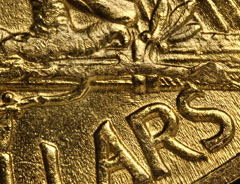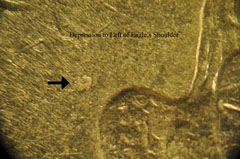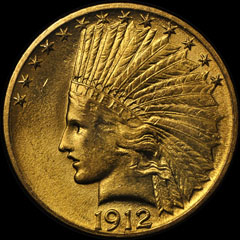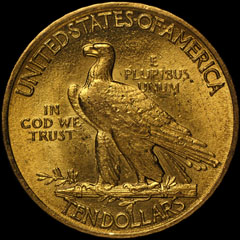Counterfeit Detection: Depressions and Tool Marks on 1912 $10s
Posted on 4/16/2012
There are several commonly seen flaws that aid in identifying counterfeits, including depressions and tool marks. All of these can set off a red flag, but some are easier than others to recognize. Probably the most obvious are tool marks, while the most challenging are depressions.
Depressions are abrasions or marks that were transferred from a genuine example onto a counterfeit die that then struck multiple counterfeits with these same flaws. On genuine pieces they’re called marks; on counterfeits they’re called depressions. While they essentially look the same, a depression is repeated on all counterfeits because it is a part of the die. They can be very difficult to identify unless you are familiar with commonly seen counterfeits in a series.
Tool marks are caused by a counterfeiter trying to remove a depression or other flaw from a fake. Some repeating depressions are instantly identified by numismatists, who alert others to the counterfeits. When the depressions are discovered, the counterfeiter may attempt to disguise them by using a tool to scratch away at the die. This effort usually backfires for the counterfeiter; instead of a depression on the coin, there are now raised tool marks, which are far more prominent.
Depressions and tool marks on United States gold coins have been extensively studied and are fairly well documented. One example is the 1912 $10 – a depression to the left of the eagle’s shoulder is seen on some fakes, while other counterfeits of this date have tooling above the R in DOLLARS. In fact, these same reverses are used to strike other fake Philadelphia Mint eagles. Knowing these two diagnostics can help you easily catch many of the counterfeit P-mint eagles on the market.
 |
 |
| Tooling (right); Depression (left) Click images to enlarge. |
|
Be sure to check out NGC’s Counterfeit Detection column published monthly in the American Numismatic Association’s The Numismatist.
Stay Informed
Want news like this delivered to your inbox once a month? Subscribe to the free NGC eNewsletter today!


